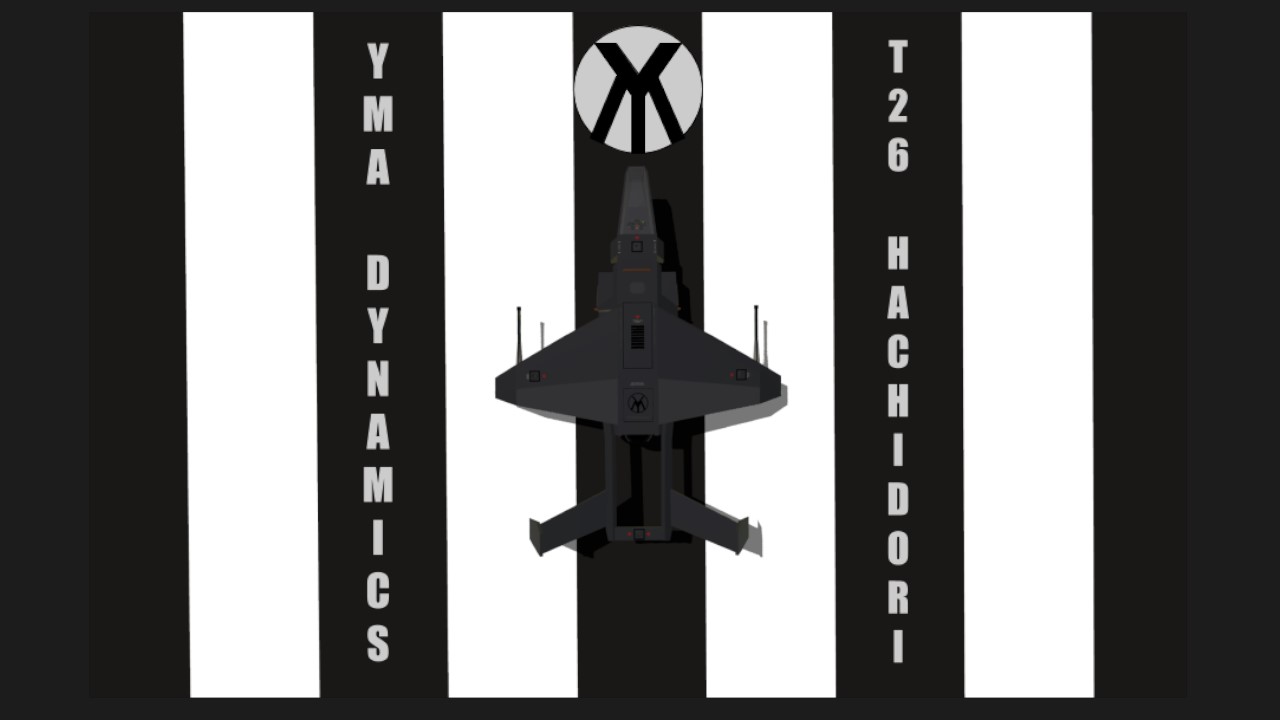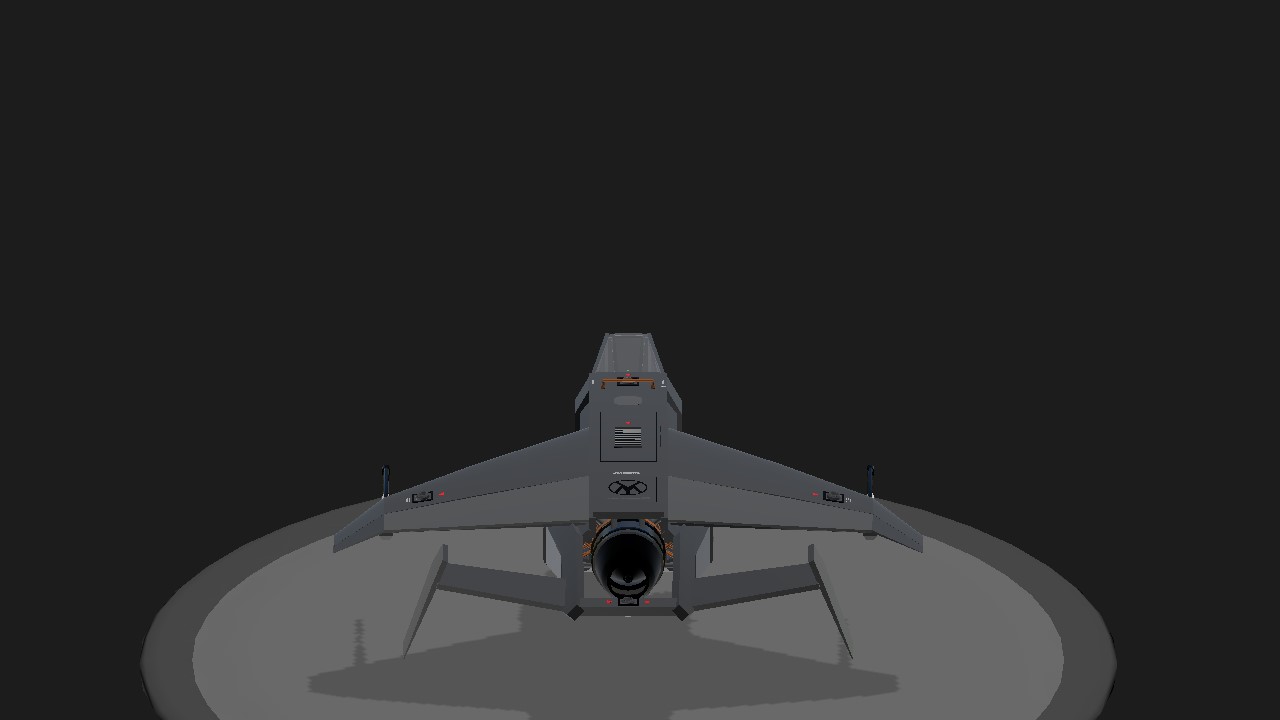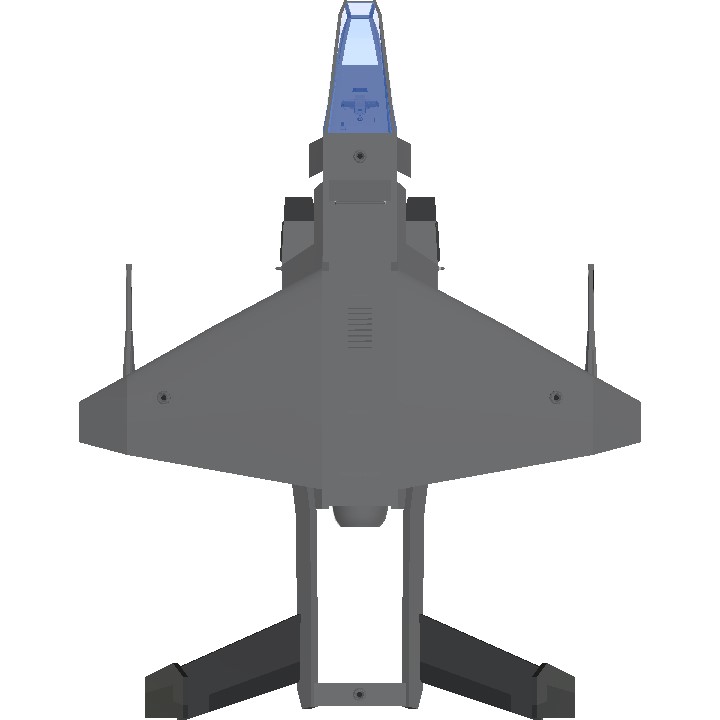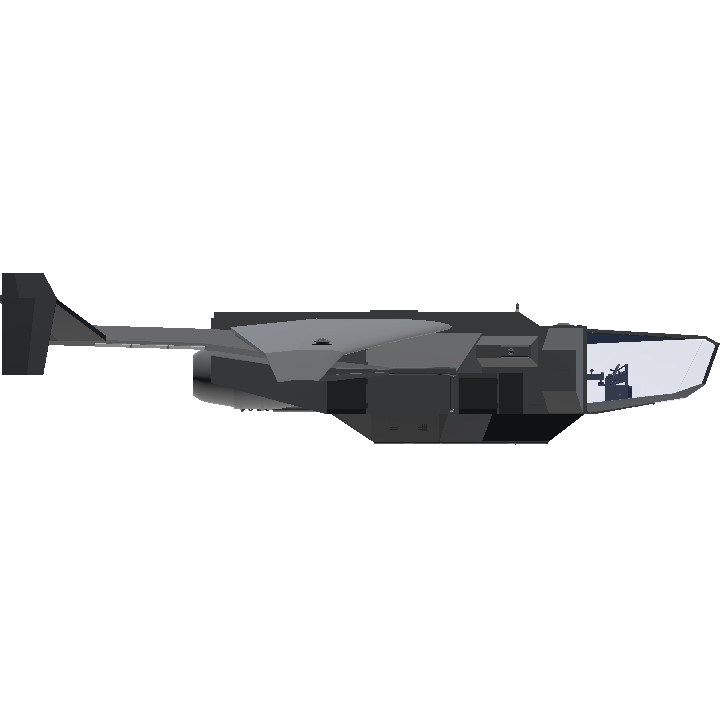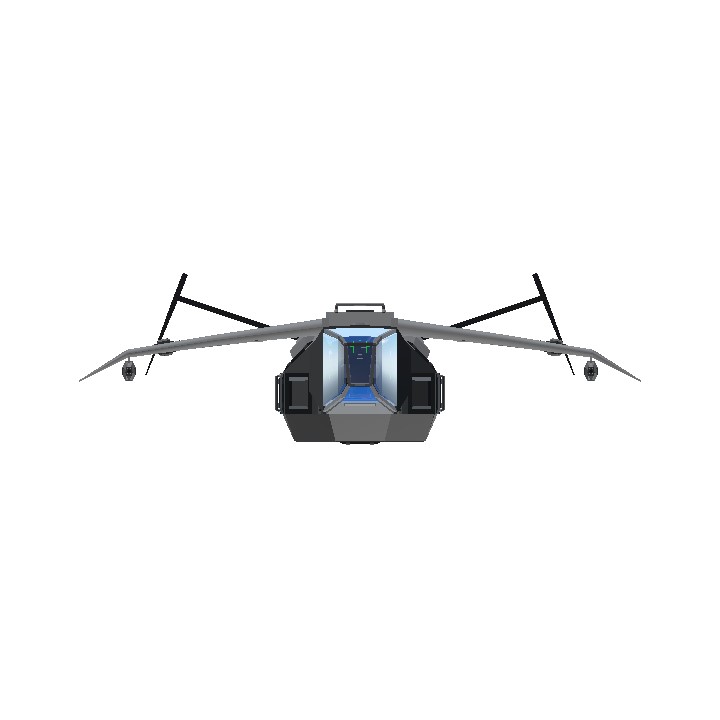HUD belongs to PlanariaLab
T-26 HachiDori:
Rugged. Resilient. Robust. These were the criteria for the T-26 Hachidori, and it certainly fulfills these. Development of the T-26 began with the need of a simple yet reliable personal transport. Many of the existing transports on the market were either too temperamental, or too large. The T-26 was designed to fill the gap between a planet-hopper and a small frigate. Combining the ease-of-operation of a smaller transport vessel with the reliability and versatility of a exploration vessel, not only is the T-26 is able to complete interstellar journeys with a crew of only one, it also retains the maneuverability and firepower of a fighter.
Features:

Designed for sustained interplanetary travel, the T-26 is fitted with the powerful yet reliable Throttled-JAC-2890X Aeorspike Rocket Engine, capable of producing a maximum of 1,801 kN of thrust with a specific impulse of 380s in a vacuum and 375s at sea level. The T-26 is also capable of vertical thrust vectoring giving it enhanced maneuverability.

The T-26 is also capable of operating the experimental Q-7 ‘Hop’ drive. The Hop drive operates differently than the standard quantum drive. Instead of collapsing the space directly in front of the vehicle, the Q-7 expands and collapses space directly behind the vehicle, creating a single ‘wake’ which the vehicle rides. While much more energy efficient than the quantum drive, the Q-7 can be very dangerous if used improperly, and will most likely result in the destruction of the vehicle.
As for armament, the T-26 is fitted with an internal weapons bay capable of carrying 2 x PD Hindenhaur Missiles, 2 x PC - 40 HV Auto energy weapons and 2 x internally mounted 25mm autocannons. While equipped with a very small explosive charge, Hindenhaur Missiles are incredibly efficient and not only are they capable of reaching incredibly high velocities in atmosphere and vacuum, they are also capable of re-acquiring a target multiple times if the target manages to evade the missile.
The T-26 also features a high-tech glass cockpit with a heads-up targeting display, avionics display and radar. It also includes an ejection system for pilot safety. The cabin includes a living space, with storage and sleeping quarters. Depending on the trim purchased, certain models can also include a shower/bathroom.
Controls:

VTOL: Vertical Thrust Component (pitch controls the angle of thrust)
Landing Gear: Open/Close exterior
Brakes: Brakes/Reverse Thrust
Activate 1: Enter Cockpit
Activate 2: Power On
Activate 3: Unlock Orbital Burn (throttle must be above 95% for activation)
Activate 4: Ejection System
Activate 5: Lights
Activate 6: Unlock weapons
Activate 7: N/A
Activate 8: Enable Quantum Hop System
The T-26 can be entirely controlled from the cockpit and is VR-Friendly
Operation:
First enter the cockpit, either activate 1 or if you are in cockpit view, press the button on the left at eye level. Next activate power and close the doors, activate 2 and landing gear or press the row of switches on the bottom right console and the switches on the far right console.
This vehicle is designed for vertical takeoff, but can land at higher speeds due to its reinforced hull. To takeoff: Slowly increase VTOL (the lever on the left console), this will increase the thrust of the VTOL engine. Use pitch and roll to adjust your angle and brakes/thrust to control your movement (both brakes and thrust are very responsive). Once you reach a stable point, increase thrust. In order to activate the orbital burn (basically an afterburner) activate three or hit the switches on the right armrest, and then increase throttle past 95%.
Specifications
General Characteristics
- Predecessor YMA T-26 mk.19 Custom
- Created On Mac
- Wingspan 34.0ft (10.4m)
- Length 43.5ft (13.3m)
- Height 10.2ft (3.1m)
- Empty Weight 16,892lbs (7,662kg)
- Loaded Weight 22,528lbs (10,218kg)
Performance
- Power/Weight Ratio 21.098
- Wing Loading 18.5lbs/ft2 (90.4kg/m2)
- Wing Area 1,216.6ft2 (113.0m2)
- Drag Points 8066
Parts
- Number of Parts 661
- Control Surfaces 8
- Performance Cost 2,562

